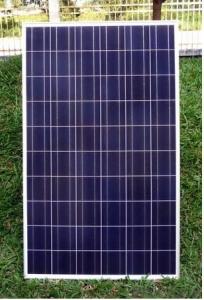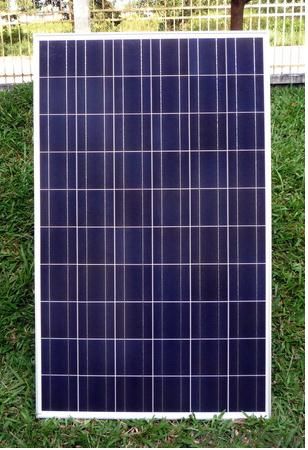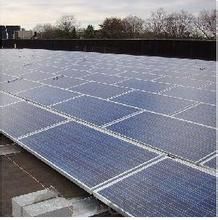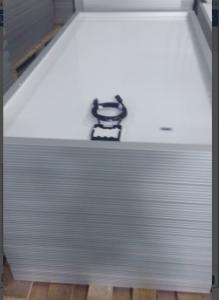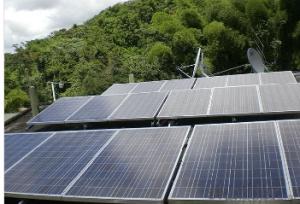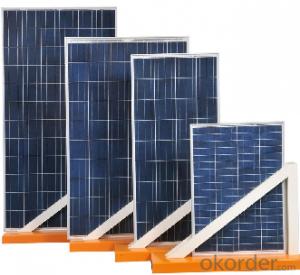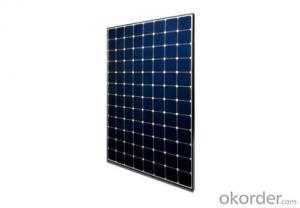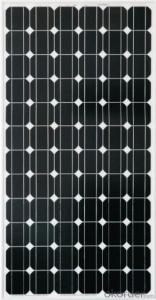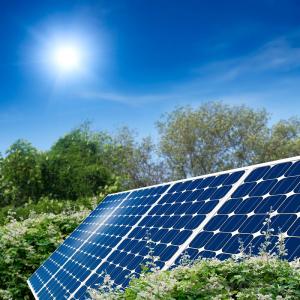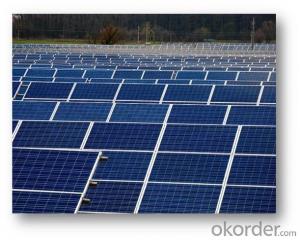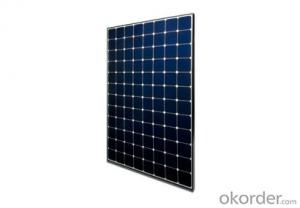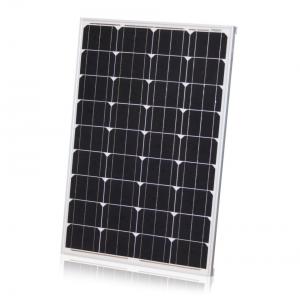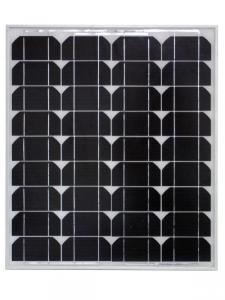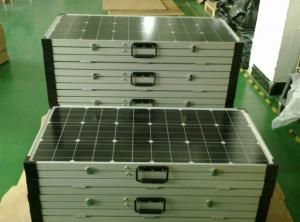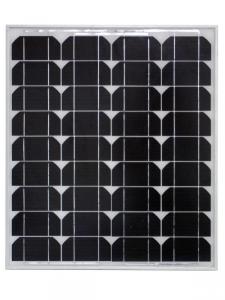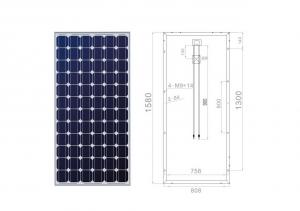Ikea Solar Panels - Monocrystalline Solar Module 205W with Outstanding Quality and Price
- Loading Port:
- Shanghai
- Payment Terms:
- TT OR LC
- Min Order Qty:
- 100 watt
- Supply Capability:
- 10000 watt/month
OKorder Service Pledge
OKorder Financial Service
You Might Also Like
Specification
Monocrystalline Solar Module 205W with Outstanding Quality and Price
Production Description
solar cell (or a "photovoltaic" cell) is a device that converts photons from the sun (solar light) into electricity.
In general, a solar cell that includes both solar and nonsolar sources of light (such as photons from incandescent bulbs) is termed a photovoltaic cell.
Fundamentally, the device needs to fulfill only two functions: photogeneration of charge carriers (electrons and holes) in a light-absorbing material, and separation of the charge carriers to a conductive contact that will transmit the electricity.
This conversion is called the photovoltaic effect, and the field of research related to solar cells is known as photovoltaics.
Solar cells have many applications.
Historically solar cells have been used in situations where electrical power from the grid is unavailable, such as in remote area power systems, Earth orbiting satellites, consumer systems, e.g. handheld calculators or wrist watches, remote radio-telephones and water pumping applications.
Solar cells are regarded as one of the key technologies towards a sustainable energy supply.
A solar cell, or photovoltaic cell, is an electrical device that converts the energy of light directly into electricity by the photovoltaic effect, which is a physical and chemical phenomenon.[1] It is a form of photoelectric cell, defined as a device whose electrical characteristics, such as current, voltage, or resistance, vary when exposed to light. Solar cells are the building blocks of photovoltaic modules, otherwise known as solar panels.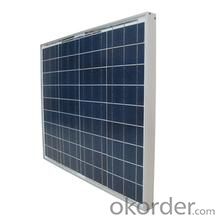
Application
remote area home system
earth orbiting satellites
consumer system
water pumping system
residential
commercial
industrial
rooftop
Product Feature
Higer convension than the poly solar module
12 years product warranty
A grade solar panel with good surface looking
EVA tempered glass TPT
MC4 connecter
Package
24pcs into one carton 312pcs into a 20 foot container.
- Q: I don't have a regulator connected as they are a little expensive for a pensioner, If I join the panels into line to the battery bank from the roof should that be OK.?
- You can do this, but it isn't the best way to go. There is no problem with joining the solar panels. There are two ways to do this, in series and in parallel. A series combination will add the voltages that each panel is producing together, but not the amperages. For example, if five panels are producing 6V at 300mA each, the end result will be 30V at 300mA for a series array. A parallel combination combines the amperages of all the panels, but not the voltages. So, in our earlier example, five panels at 6V and 300mA would provide 6V and 500mA (.5A) if wired in parallel. Series-parallel combinations are also possible, giving some of the benefits of each method. This would probably better understood by doing a quick search on Google Images for series, parallel, and series-parallel. You CAN connect the solar panels directly to your battery bank with no regulator. Unfortunately, without a regulator, the connection is two-way. When the sun is out and the solar panels are producing more voltage than the batteries, the batteries will charge. However, when the panels are producing less voltage than the batteries, the batteries will instead send power into the solar panels, which will be dissipated and wasted. The panels may charge your batteries during the day, but they will discharge them at night.
- Q: in the afternoon sun heat increases to high level due to which the panels heats up very high now my question is this heat will effect the panels life time and will damage the panels or not ??
- They degrade over time, losing efficiency. They're generally good for several decades.
- Q: Can solar panels be installed on concert venues or music festivals?
- Yes, solar panels can be installed on concert venues or music festivals. In fact, many event organizers are increasingly adopting solar energy to power their events, reducing their carbon footprint and promoting sustainability. Solar panels can be installed on rooftops, parking lots, or even as temporary structures to generate clean and renewable energy for the venue's electricity needs.
- Q: I want to plug my solar system battery bank into my transfer switch on my cabin when not using a generator. The transfer switch will handle 220 volt from my generator. How do I get a 220 volt inverter that runs 60 hz or do all of them run 50 hz.I see plenty of 20 volt 60 hz. I'm at the point of needing to order one and I'm not sure.
- Where is this located? Very few countries use 220 60Hz. Find an inverter that is dual voltage like the reference. Usually the frequency switch is separate from the voltage switch. .
- Q: Can solar panels be installed on a military base or facility?
- Yes, solar panels can definitely be installed on a military base or facility. In fact, many military bases around the world have already adopted solar energy as a means to reduce their reliance on fossil fuels and increase their energy independence. Solar panels can be installed on rooftops, parking lots, or open fields within the base, providing a sustainable and reliable source of clean energy. The use of solar panels on military bases not only helps to reduce carbon emissions but also enhances the resiliency and security of the base's energy infrastructure.
- Q: I bought a pack of OEM mini solar panels that produce 4.2v and 22mA and I was just wondering how many LED's I could hook up to one mini solar panel? I currently have one green LED with a resistor on the one panel but was wondering how many I could possibly run off of one panel?
- Typically LED's run off low voltage and 20mA or so of power (it depends what kind of led you have). That being said if one of your solar panels only provides 22mA of power then your circuit would have to be a series circuit for you to connect more than one. In a series circuit the current supplied of 22mA will go through each LED whereas a parallel circuit the current would be divided for each subsequential led. So in your case i can see you getting away with 3 or so led's before the voltage drop across each led will cause the voltage to be insufficient enough to drive anymore. Keep in mind the LED's will turn on but the first one will be bright then next one not as bright and so on. If you opted out and bought a solar panel with 200mA and 4V you could wire the led's in parallel and get 0 led's to turn on with the same brightness or intensity. Hoped that helped!
- Q: How do solar panels affect the property's energy management strategy?
- Solar panels can significantly impact a property's energy management strategy by providing a renewable and sustainable source of electricity. By harnessing solar energy, the property can reduce its dependence on traditional power sources, lower energy costs, and decrease its carbon footprint. Solar panels can also help to stabilize energy prices, as they generate electricity during peak demand periods, reducing the need to purchase electricity from the grid. Additionally, solar panels can provide a reliable source of backup power during grid outages, enhancing the property's energy resilience. Overall, solar panels offer numerous advantages to a property's energy management strategy, promoting sustainability, cost savings, and energy independence.
- Q: trees vs solar panels who would win?
- hmmmmm trees would squash em and solar pannels would electric cute em............... :)
- Q: Its cloudy out and i have a solar panel that has 3, .5 volt cells But how do i charge it without sun any other ways?
- For the best answers, search on this site https://shorturl.im/awXJ0 The charge controller will protect the battery. You might want to think about getting a fuse.
- Q: I need to know where I can buy the parts or find them as scrap to make my own solar panels. Is there a cheap way of buying the panels or can I make them myself.
- You can buy a box broken cells and solder them together and save big bucks.
Send your message to us
Ikea Solar Panels - Monocrystalline Solar Module 205W with Outstanding Quality and Price
- Loading Port:
- Shanghai
- Payment Terms:
- TT OR LC
- Min Order Qty:
- 100 watt
- Supply Capability:
- 10000 watt/month
OKorder Service Pledge
OKorder Financial Service
Similar products
Hot products
Hot Searches
